Also known as the Magnolia State, Mississippi is located in the southeastern region of the United States. It is one of the poorest states in the country, with the lowest per-capita income. While it ranks low in health, development, and education, the state is one of the largest producers of farm-raised catfish, pulpwood, cotton, and sweet potatoes. Regardless, it is a beautiful state – that’s a fact!
The state is adorned by multiple lakes and rivers that flow through its lowlands, covering almost the entire territory. Due to it being covered in lowlands, the state’s highest point stands at 807 feet (246 m).
In the following lines, you’ll find out more about native plants of the Magnolia State – this is the perfect article for those interested in the lowlands biome of this state.
What Is a Native Plant?
Native plants are those species that were able to live and prosper naturally in a certain region or area for thousands of years. Ultimately, they became part of the very ecosystems that make a region.
Unlike introduced plants, native plants don’t need any assistance in growth and development – they are perfectly adapted to an area’s light, soil, weather, and climate conditions.
Another word often used to describe native plants is indigenous.
11 Native Plants in Mississippi
1. Red Buckeye
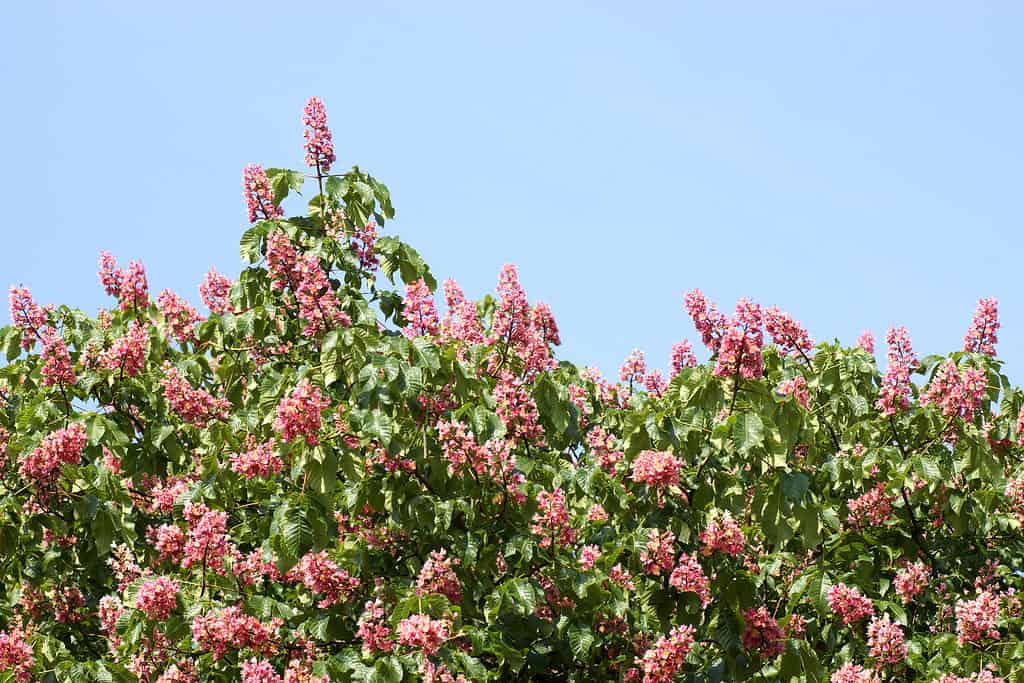
The red buckeye can grow as a large shrub or a small tree.
©Bildagentur Zoonar GmbH/Shutterstock.com
| Red Buckeye | |
|---|---|
| Scientific name | Aesculus pavia |
| Type of plant | Deciduous |
| Distribution | Southern and Eastern United States |
Also known as the firecracker plant, this flowering plant grows in the southern and eastern parts of the United States. You might also come across it being called woolly or scarlet buckeye (thanks to its deep red color)
The red buckeye can grow as a large shrub or a small tree. It usually grows up to 16-26 feet (5-8 m) tall and can often be found in a multi-stemmed form. Its flowers are organized in tubular clusters – these grow up to 4-7 inches (10-18 cm) long. The seeds and fruits of the red buckeye are poisonous to humans.
The plant is not facing any threats and is listed as having Least Concern regarding conservation status.
2. Flowering Dogwood
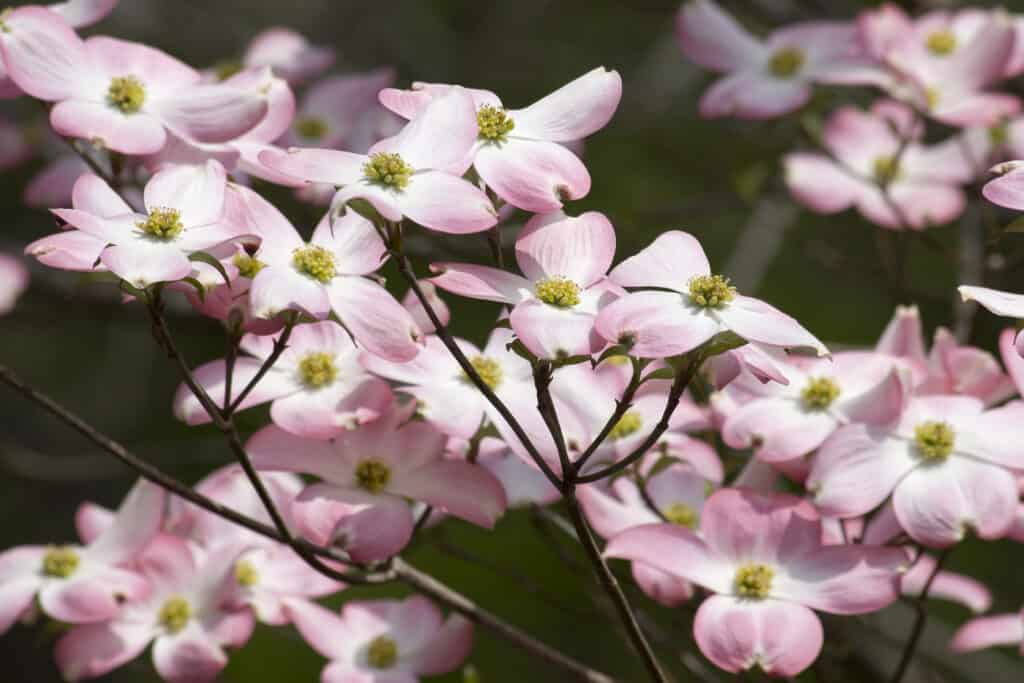
The flowering dogwood is a rather small tree, growing up to only 33 feet high.
©iStock.com/JillLang
| Flowering Dogwood | |
|---|---|
| Scientific name | Cornus florida |
| Type of plant | Deciduous |
| Distribution | Eastern North America, Northern Mexico |
The flowering dogwood is a rather small tree, growing up to only 33 feet (10 m) high – it is usually wider than it is taller, especially after it reaches maturity. Cornus florida has a maximum lifespan of about 80 years.
While you might be inclined to admire the flower head’s white petals, be aware that those are bracts. These surround the flower head and protect the actual flowers of the tree that are inconspicuous. The bracts can be red, pink, or, most commonly, white.
3. Eastern Bluestar
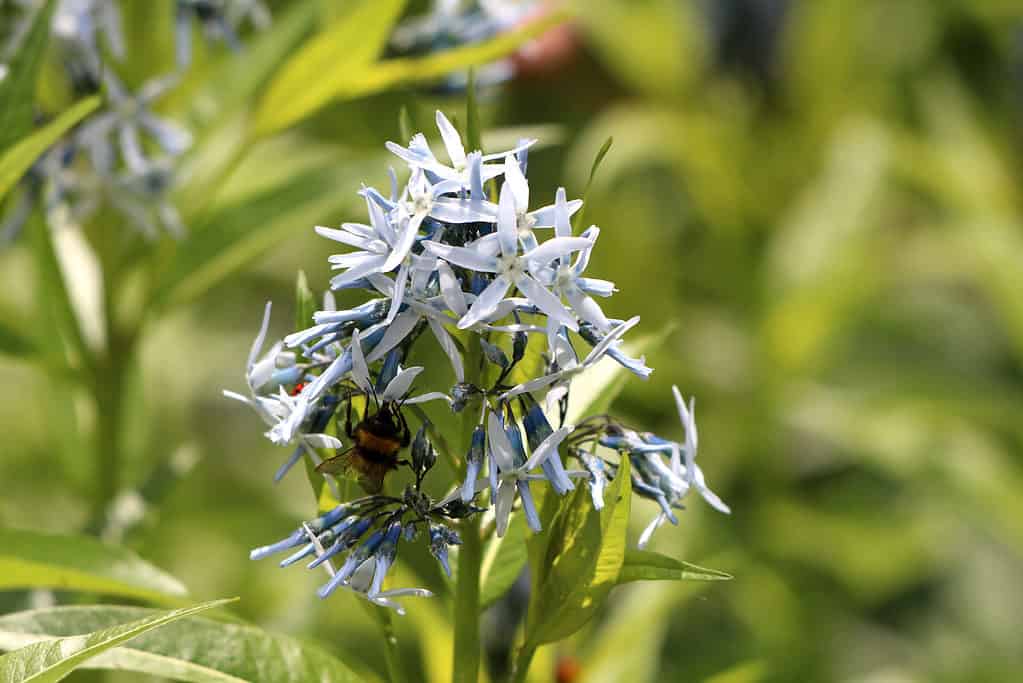
The eastern bluestar is part of the Amsonia genus.
©iStock.com/hecos255
| Eastern Bluestar | |
|---|---|
| Scientific name | Amsonia tabernaemontana |
| Type of plant | Perennial |
| Distribution | Central United States |
The eastern bluestar can be found throughout North America and is part of the Amsonia genus. It is a herbaceous perennial plant that can usually be found in open thickets and woods. The plant forms clumps and blooms in pyramidal clusters that feature soft light-blue colored flowers. As the name suggests, these flowers have the shape of a star.
Native to Mississippi and other U.S. states, the plant is often preferred as a garden addition – it is easy to cultivate, especially in full sun. In the latter case, the plant will rarely require staking or pruning.
4. Cigar Tree
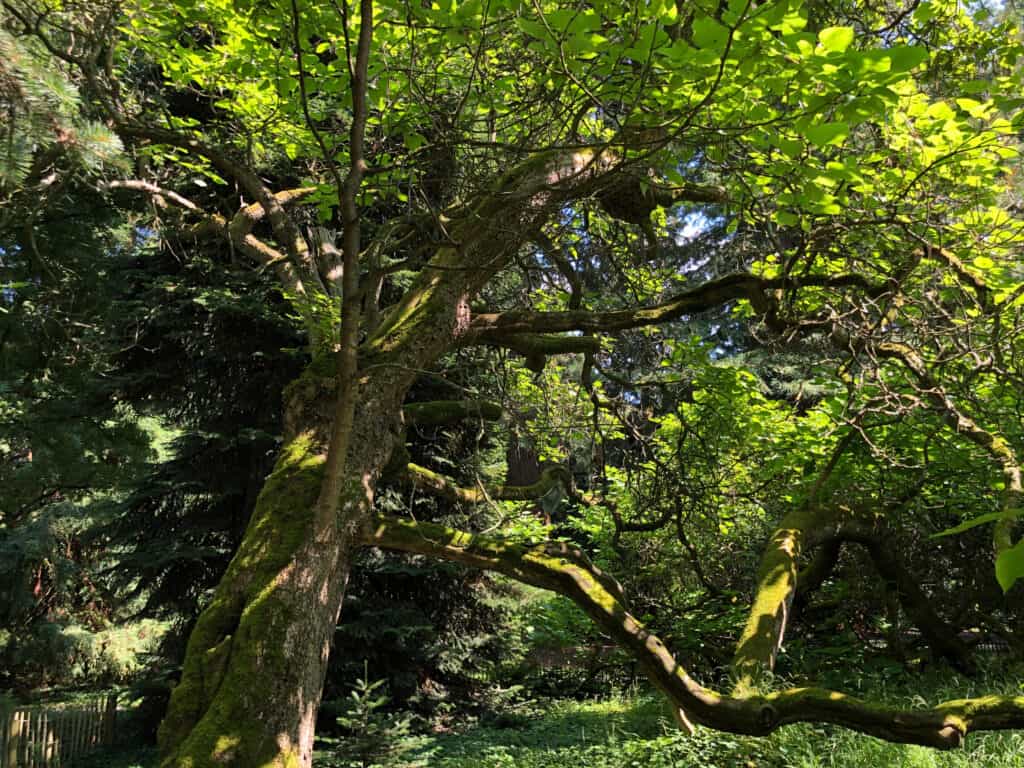
The cigar tree is part of the
Catalpagenus.
©Mario Krpan/Shutterstock.com
| Cigar Tree | |
|---|---|
| Scientific name | Catalpa bignonioides |
| Type of plant | Deciduous |
| Distribution | Southeastern United States (Alabama, Georgia, Florida, Louisiana, Mississippi) |
Often called southern catalpa, Indian bean tree, or simply cigar tree, Catalpa bignonioides is part of the Catalpa genus. It grows in the southeastern part of the United States. Specimens of this species usually grow up to 50-60 feet (15-18 m) tall, with a trunk about 3 feet (1 m) wide.
The flowers of the cigar tree are white, trumpet-shaped, and feature yellow spots on their interior. They grow in formations called panicles which consist of 20 – 40 flowers. The tree also produces fruits in the form of long bean pods – about 7.8-15.7 inches (20-40 cm) long.
5. Eastern Red Columbine
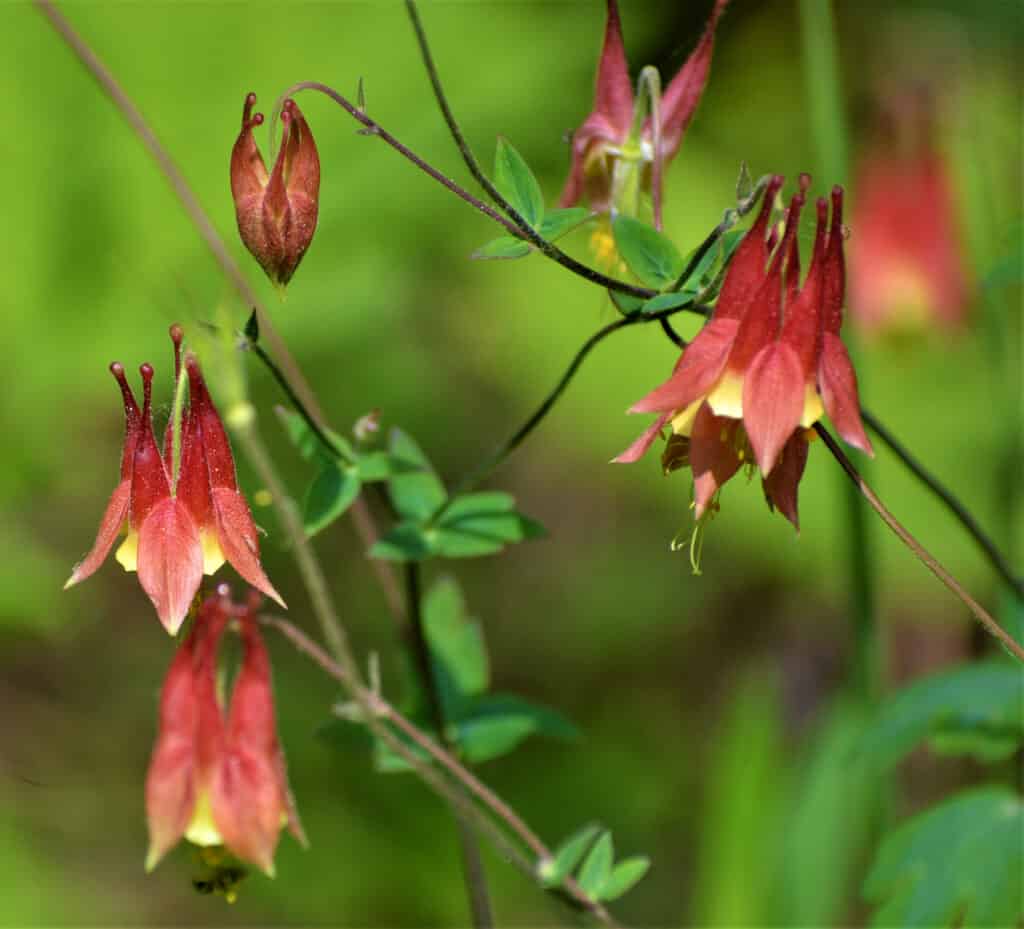
The eastern red columbine is known for its red and yellow flowers growing up to 1-2 inches long.
©akslocum/Shutterstock.com
| Eastern Red Columbine | |
|---|---|
| Scientific name | Aquilegia canadensis |
| Type of plant | Perennial |
| Distribution | Eastern North America |
Often called the Canada columbine or wild columbine, the eastern red columbine is part of the Ranunculaceae family (known as the buttercup family). An eastern red columbine specimen can have varying heights – as small as 6 inches (15 cm) or as tall as 35 inches (90 cm).
The eastern red columbine is known for its red and yellow flowers growing up to 1-2 inches (2.5-5.1 cm) long. The plant features leaves similar to those of a fern, and they are in groups of threes and grow only from the plant’s base and stems.
6. Plains Coreopsis
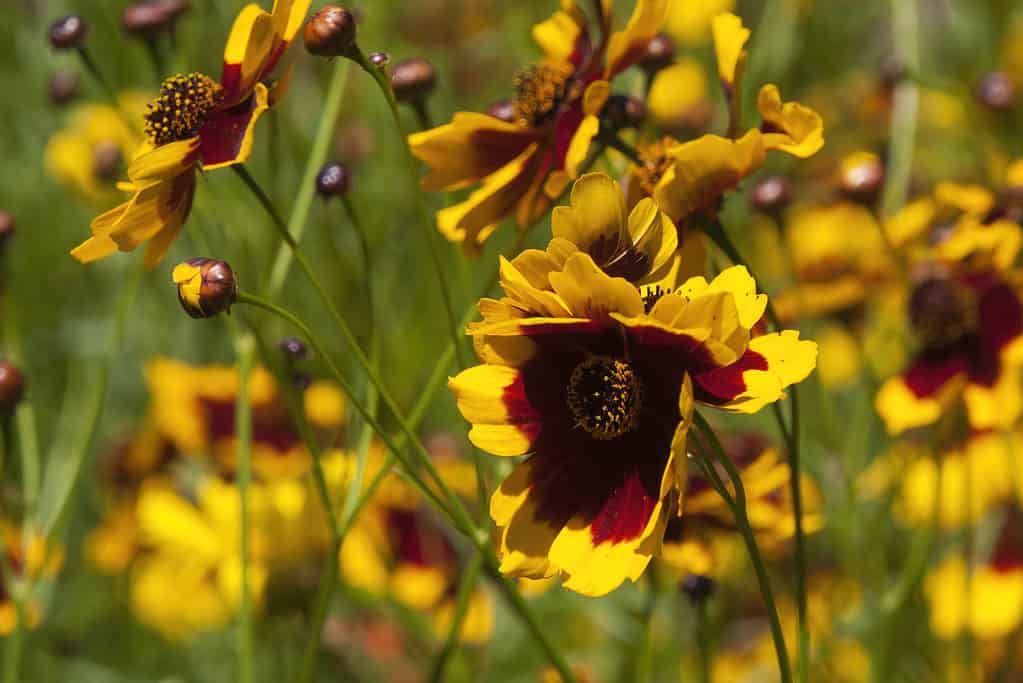
The plains coreopsis plant is often called calliopsis, garden tickseed, or golden tickseed.
©iStock.com/Karin de Mamiel
| Plains Coreopsis | |
|---|---|
| Scientific name | Coreopsis tinctoria |
| Type of plant | Annual forb |
| Distribution | Canada, Northeast Mexico, throughout the United States (primarily the Great Plains, Southern states) |
The plains coreopsis plant is often called calliopsis, garden tickseed, or golden tickseed. It is native throughout the United States but also in Canada and northeast Mexico. An interesting aspect about this plant is that, even though it has quite a stunning aspect, it grows in some of the most unfavorable areas – cultivated fields and roadsides.
Coreopsis tinctoria can grow up to 12-40 inches (30-100 cm) tall and features glabrous leaves (meaning hairless in botanical terms). The flowers are, however, the most beautiful part of the plant. They are bright yellow, and the disc florets turn dark brown towards the center. Besides the usual roadside, you can spot plains coreopsis in meadows, plains, prairies, and savannas.
7. Orange Milkweed
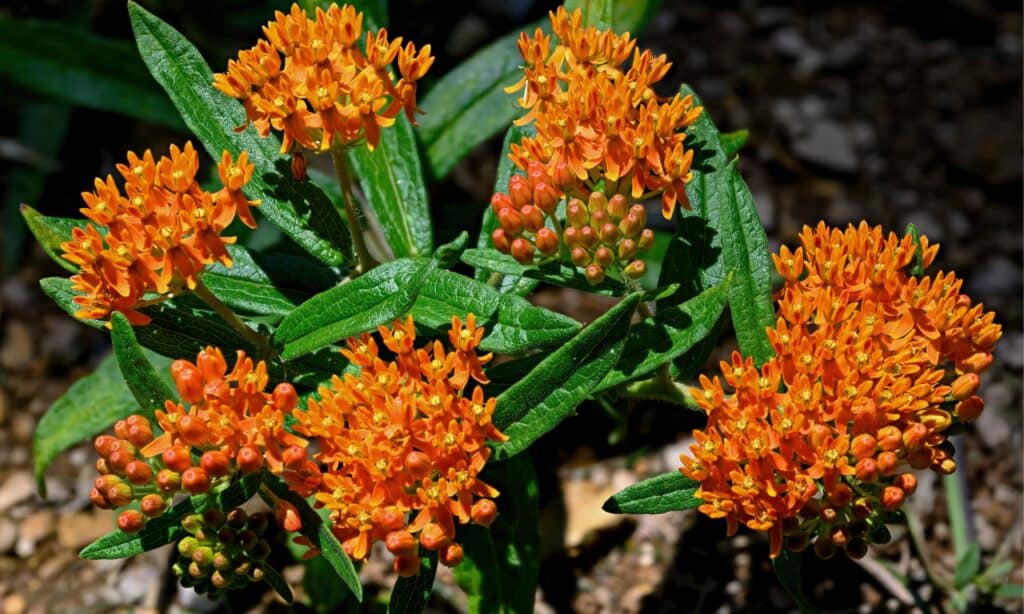
The orange milkweed flowers from April to September.
©iStock.com/McKinneMike
| Orange Milkweed | |
|---|---|
| Scientific name | Asclepias tuberosa |
| Type of plant | Perennial |
| Distribution | Eastern and southwestern regions of North America |
The orange milkweed, commonly referred to as the butterfly weed and known by its scientific name of Asclepias tuberosa, can be found throughout Southwestern and Eastern North America. The plant is perennial and can attain a height of up to 3.5 feet (1 m), but it can also be found as little as 1 foot (0.3 m).
The orange milkweed flowers from April to September. Then, wide umbels filled with flowers appear – they can be red, yellow, or, most commonly, orange. The flowers have five sepals and five petals.
8. White Mouth Dayflower
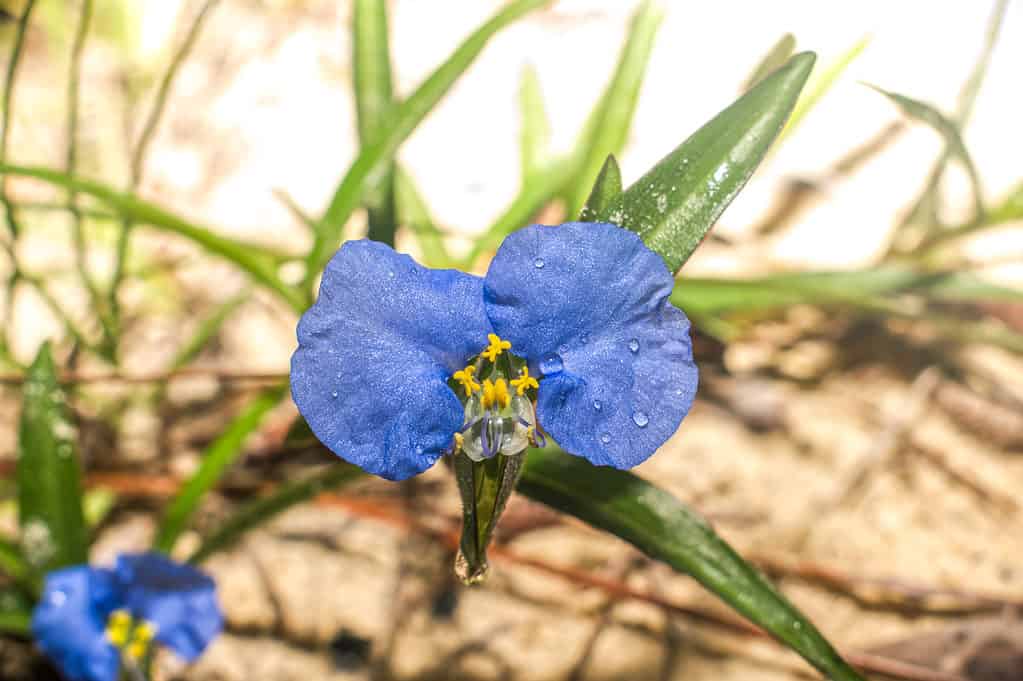
The white mouth dayflower can be found as low as sea level and even as high as 4,265 feet in altitude.
©iStock.com/Dan Rieck
| White Mouth Dayflower | |
|---|---|
| Scientific name | Commelina erecta |
| Type of plant | Perennial |
| Distribution | Americas, Africa, Western Asia |
The white mouth dayflower, also known as the widow’s tears or slender dayflower, can be found worldwide. It can be found as low as sea level and even as high as 4,265 feet (1,300 meters) in altitude. It has a wide distribution range mainly because it can grow in moist or dry, disturbed sites.
The main feature of the white mouth dayflower is its flowers’ bright blue color. The plant might not grow that tall, but you can’t possibly miss it due to its color, especially if it tries to hide in a patch of grass.
9. American Beautyberry
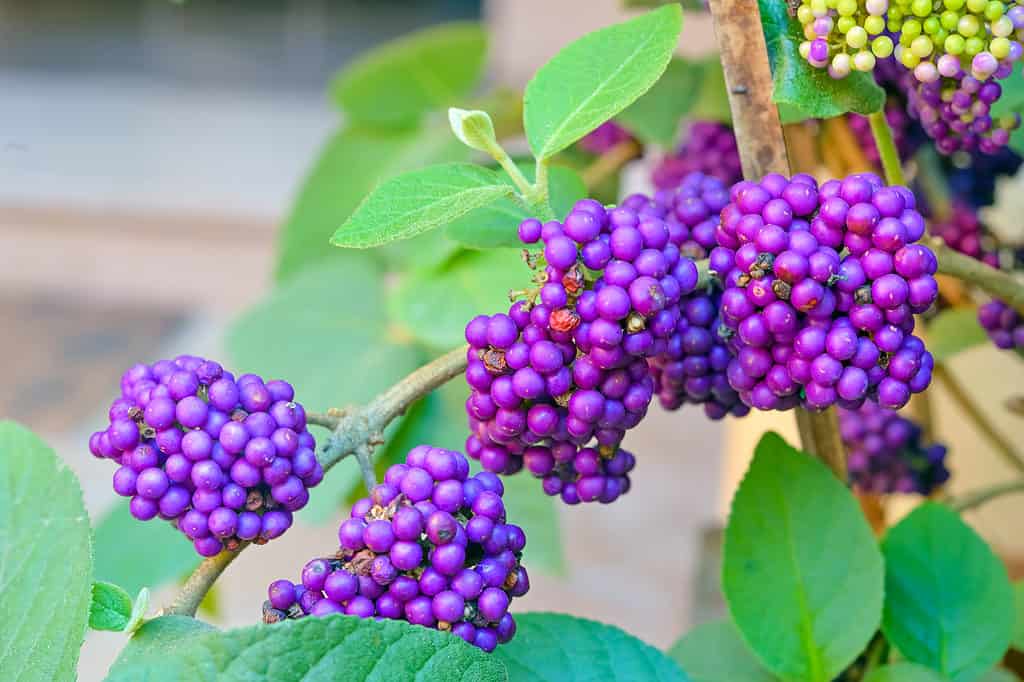
The American beautyberry is known for its large clusters of vivid purple berries.
©Amvi Jovas/Shutterstock.com
| American Beautyberry | |
|---|---|
| Scientific name | Callicarpa americana |
| Type of plant | Shrub |
| Distribution | Much of North America – from Maryland to Florida, west to Arkansas and Texas, Bahamas, Cuba, Bermuda |
Native to the Southern United States, the American beautyberry is known for its large clusters of vivid purple berries. These berries are preferred by deer and birds, ensuring the species’ longevity as they spread their seeds.
The fruits of the American beautyberry have many uses, even in terms of human consumption. However, since the fruits are astringent, they should be consumed only in small amounts. Moreover, the plant’s roots and leaves can also be used regularly – for herbal teas (roots) or as a crushed powder (leaves) that reportedly does wonders at keeping insects away from farm animals.
10. Crossvine
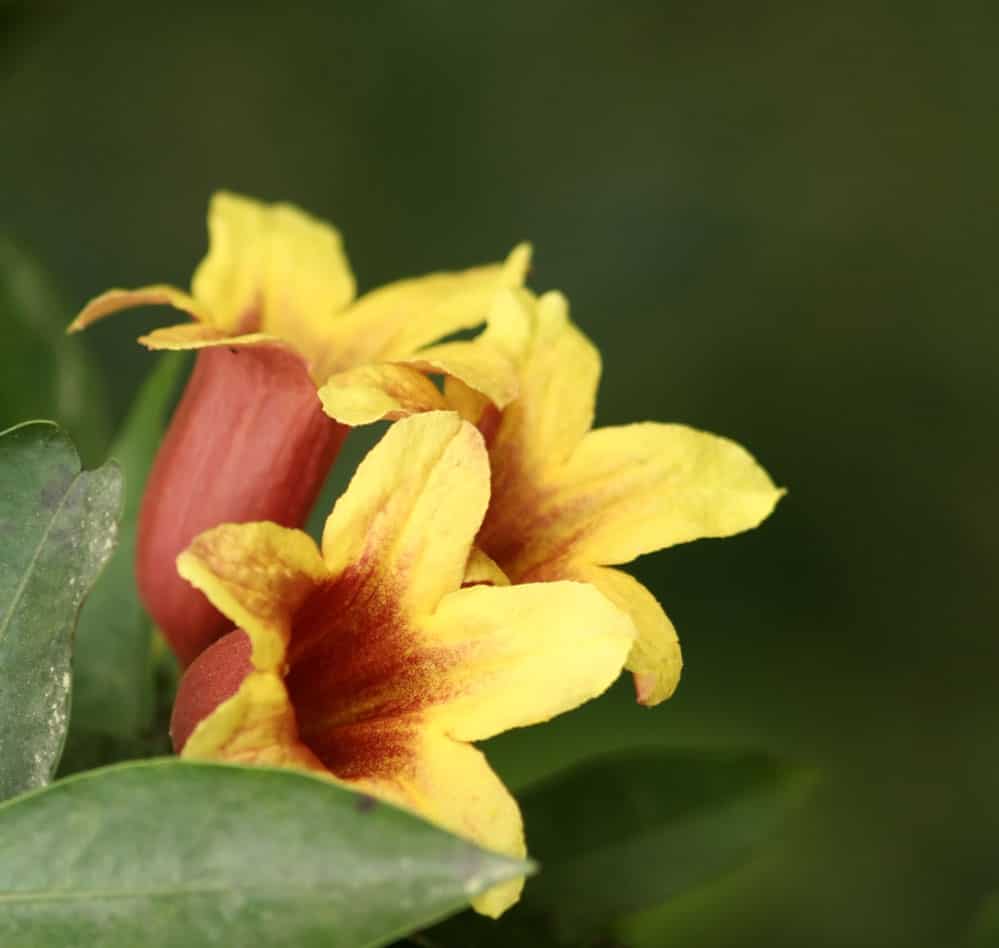
The crossvine features stunning bright red-yellow flowers.
©iStock.com/Dewitt
| Crossvine | |
|---|---|
| Scientific name | Bignonia capreolata |
| Type of plant | Vine |
| Distribution | Southeastern and central parts of the United States |
As the name implies, the crossvine is nothing else but a simple vine. However, unlike many vine species, Bignonia capreolata features stunning bright red-yellow flowers, often referred to as the tangerine beauty (the name of a plant variety).
Again, in contrast to other vine species, the crossvine does produce tendrils but does not twine, making it difficult to identify it in the wild. As for the flowers, they are tubular and usually in two colors – red on the outside and yellow on the inside. Reportedly, they have a pleasant mocha aroma.
11. Pignut Hickory
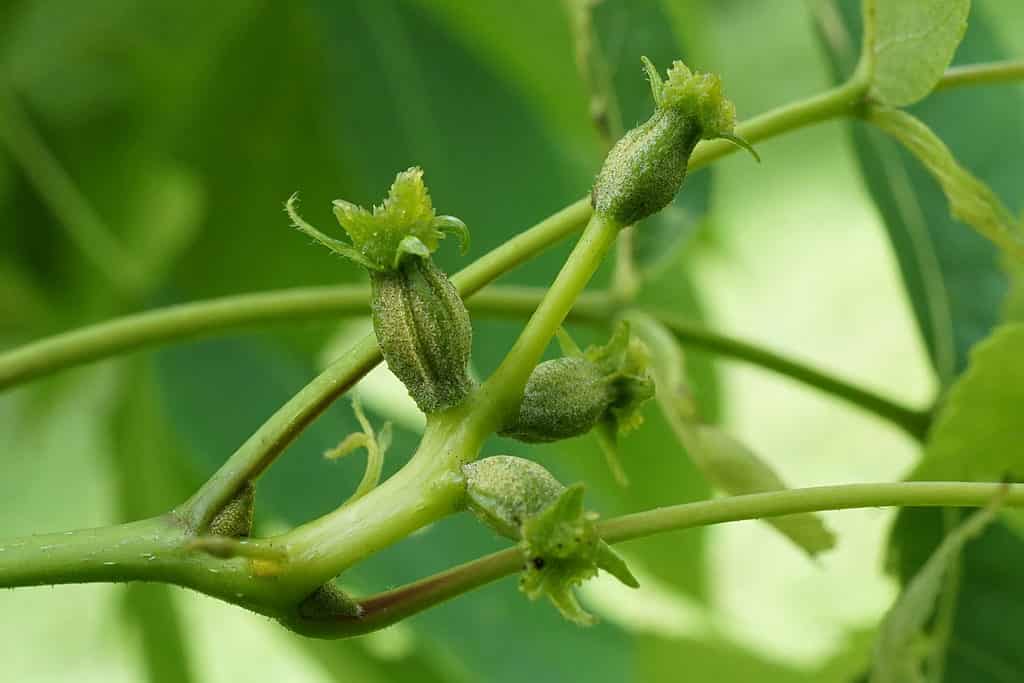
The pignut hickory is known for its pear-shaped nut that ripens mid-autumn but mostly for its sweet smell, similar to that of maple.
©Plant Image Library / Flickr – License
| Pignut Hickory | |
|---|---|
| Scientific name | Carya glabra |
| Type of plant | Hickory |
| Distribution | Eastern United States |
The pignut hickory is a beautiful tree found throughout the entire Eastern United States. It is known for its pear-shaped nut that ripens mid-autumn but mostly for its sweet smell, similar to that of maple. You might have heard of it under a different name – swamp hickory, broom hickory, sweet pignut, the coast pignut hickory, and many more.
Carya glabra is also important to the economy, as its wood is often used as fuel.
Up Next:
- Which First: The Mississippi River or Mississippi the State?
- Discover the Coldest Place in Mississippi
- Ticks in Mississippi
The photo featured at the top of this post is © Mario Krpan/Shutterstock.com
Sources
- The University of Mississippi, Available here: https://olemiss.edu/depts/landscape/nativeplants.html
- Backyard Garden Lover, Available here: https://www.backyardgardenlover.com/mississippi-native-plants-list/
- Missouri Botanical Garden, Available here: https://www.missouribotanicalgarden.org/PlantFinder/PlantFinderDetails.aspx?taxonid=276088&isprofile=0&
- Lady Bird Johnson Wildflower Center, Available here: https://www.wildflower.org/plants/result.php?id_plant=aqca
Thank you for reading! Have some feedback for us? Contact the AZ Animals editorial team.






